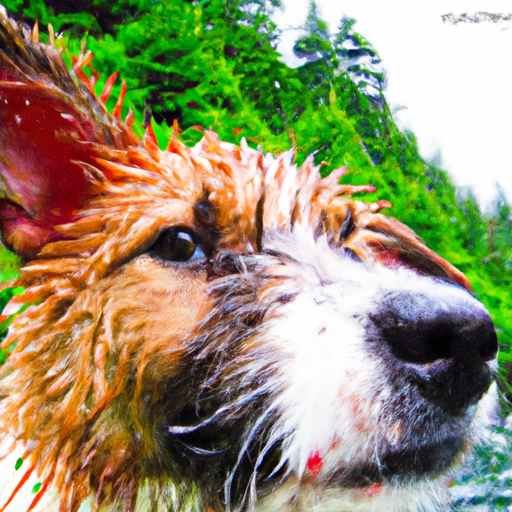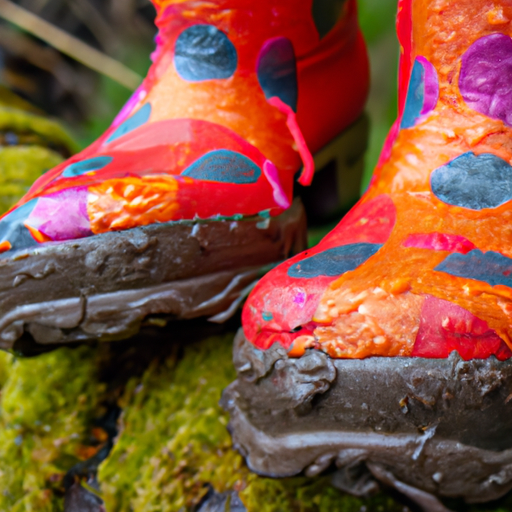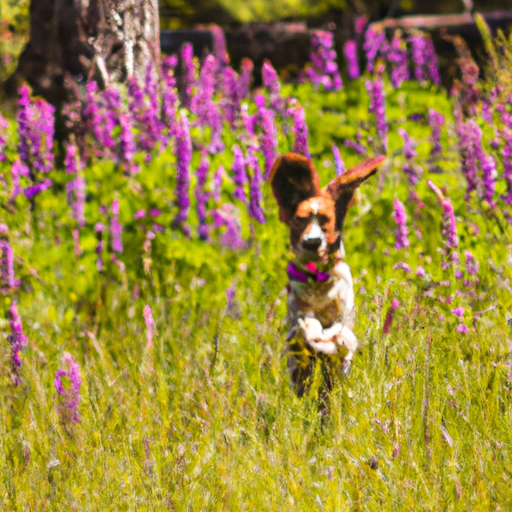Are you a dog lover looking for a fun and adventurous way to bond with your furry friend? Look no further! “Hiking Adventures with Puppies and Young Dogs” is the perfect article for you. Whether you have a lively puppy or a young dog, this article will provide you with all the tips and tricks you need to have an unforgettable hiking experience together. From essential gear to safety precautions, we've got you covered. Get ready to embark on exciting trails, explore nature, and create lasting memories with your four-legged companion.
Choosing the Right Trail
When it comes to hiking with your dog, choosing the right trail is crucial. You want to select a trail that matches your dog's ability and temperament. Consider the difficulty level of the trail and whether it aligns with your dog's fitness level. Some dogs are natural born hikers and can handle challenging terrains, while others may prefer a more leisurely stroll. Make sure to research the trail's length, elevation gain, and terrain before embarking on your adventure.
Additionally, it's important to check if the trail is dog-friendly. Some trails have specific policies regarding dogs, such as requiring them to be leashed at all times or prohibiting them altogether. Researching this information beforehand will save you from any surprises or disappointments. Look for trails that explicitly mention being dog-friendly or have positive reviews from fellow dog owners.
Lastly, don't forget to research the trail conditions. This can include checking for any recent closures, trail maintenance, or potential hazards along the way. Being aware of these factors will help you plan your hike accordingly and ensure a safe and enjoyable experience for both you and your furry friend.
Training and Preparation
Before hitting the trails, it's important to properly train and prepare your dog for the adventure ahead. Start with short and easy walks in your neighborhood or local park. This will help your dog get accustomed to being on a leash and walking alongside you.
As your dog becomes more comfortable with short walks, gradually increase the duration and difficulty of your outings. This will build up their endurance and allow them to handle longer hikes. Remember to always listen to your dog's cues and adjust accordingly. Pushing your dog too hard can lead to fatigue or injuries.
Alongside physical training, it's also essential to teach your dog basic commands such as “sit,” “stay,” and “come.” These commands will come in handy while hiking, ensuring that your dog stays safe and under control. Use positive reinforcement techniques such as treats and praise to motivate and reward your dog for good behavior.
Another aspect of preparation is getting your dog used to different terrains. Trails can vary in terrain, from rocky paths to muddy trails. Gradually introduce your dog to these different surfaces, letting them explore and adapt at their own pace. This will help prevent any paw injuries or discomfort while on the trail.
Essential Gear for a Dog Hike
Having the right gear is essential for a successful and safe hike with your dog. Here are some must-have items to consider:
-
Proper fitting harness or collar: A well-fitting harness or collar is essential for keeping your dog secure and comfortable while on the trail. It should allow for easy movement while still providing control.
-
Leash and long leash: A sturdy leash is a must to keep your dog close to you, especially in areas where they need to be leashed. Additionally, a long leash can be useful in giving your dog some freedom to explore while still maintaining control.
-
Water and food bowls: Keep your dog hydrated and nourished by bringing collapsible water and food bowls. These are lightweight and easy to carry, ensuring that your dog stays hydrated and fueled throughout the hike.
-
Dog backpack for carrying supplies: If your dog is physically capable, consider getting a backpack specifically designed for dogs. This allows them to carry their own supplies such as water, snacks, and even some of your gear.
-
First aid kit for dogs: Accidents can happen, so it's important to have a first aid kit specifically designed for dogs. This should include items like bandages, antiseptic wipes, and tweezers for removing ticks.
-
Tick and flea prevention products: Protecting your dog from ticks and fleas is crucial, especially in areas where these pests are prevalent. Use tick and flea prevention products recommended by your veterinarian to keep your dog safe and comfortable.
-
Poop bags: Responsible pet ownership includes cleaning up after your dog. Always carry poop bags to pick up and properly dispose of your dog's waste.
-
Reflective gear for visibility: If you plan on hiking during low light conditions or near roads, invest in reflective gear for your dog. This will make them more visible to others and help prevent accidents.
Always make sure to adjust the gear and supplies based on the length and difficulty of the trail, as well as the specific needs of your dog.
Choosing the Right Time of Day and Season
When planning a hike with your dog, it's important to consider the right time of day and season for both their comfort and safety.
First and foremost, think about your dog's energy levels. Some dogs are more energetic in the morning, while others prefer afternoon or evening activities. Choose a time of day that aligns with your dog's natural energy level to ensure an enjoyable experience for both of you.
Avoid hiking during peak heat hours, especially in the summer months. Dogs are more susceptible to heat exhaustion and heatstroke than humans. Instead, opt for early morning or late afternoon hikes when temperatures are cooler. Always bring plenty of water to keep your dog hydrated throughout the hike.
Weather conditions also play a significant role in determining the right time for a hike. Check the weather forecast before heading out and adjust your plans accordingly. Hiking in extreme weather conditions such as thunderstorms, heavy rain, or extreme cold can put your dog's health and safety at risk.
If you plan to hike during hunting season, take extra precautions to keep your dog safe. Be aware of hunting areas and try to choose trails where hunting is prohibited. If hiking in an area where hunting is allowed, consider using bright-colored vests or bandanas for your dog to increase their visibility.
Taking these factors into account will help ensure a comfortable and safe hiking experience for both you and your four-legged companion.
Managing Your Dog's Health and Safety
Before embarking on any hiking adventure, it's essential to consult with your veterinarian. They can assess your dog's overall health and advise you on any precautions or specific considerations based on your dog's breed, age, and medical history.
Ensure that your dog is up-to-date on vaccinations and preventive medications such as heartworm, flea, and tick control. This will help protect your furry friend from potential diseases and pests that they may encounter while on the trail.
Carry a copy of your dog's health records with you during your hike. In case of any emergencies or if you need to seek veterinary care while away from home, having these records readily available can be invaluable.
One of the most vulnerable parts of your dog's body during a hike is their paws. They are exposed to various terrains, such as rough rocks, hot pavement, or sharp objects. Protect your dog's paws by considering booties or paw balms designed to provide grip and prevent injuries.
Always keep an eye out for any signs of exhaustion, injury, or illness during the hike. Dogs may not always show obvious signs of distress, so it's important to be vigilant. If you notice any limp, excessive panting, or behavioral changes, it's best to take a break and assess the situation. Carry extra water and a portable bowl for your dog's use.
Socializing Your Dog on the Trail
Encountering other dogs and hikers is inevitable while on the trail. To ensure a positive experience for everyone, it's vital to socialize your dog properly.
Gradual introductions with other dogs are key. Some dogs are naturally more social than others, but it's crucial for all dogs to learn how to interact politely. Keep your dog on a leash if required and allow them to approach other dogs in a calm and controlled manner. Observe their body language for signs of aggression or discomfort, and intervene if necessary.
Practice proper trail etiquette by keeping your dog under control at all times. Yield to other hikers, keeping a safe distance to prevent any accidents or unwelcome interactions. This includes stepping aside and allowing faster hikers to pass, or moving to the side when encountering oncoming traffic.
Teach your dog to stay on the trail to minimize disruption to the surrounding environment. Discourage them from wandering off-trail, as it can damage vegetation and disturb wildlife habitats.
Tips for a Safe and Enjoyable Hike
To make your hiking experience with your dog both safe and enjoyable, here are some additional tips to keep in mind:
-
Always have your dog on a leash: Unless you're hiking in an area specifically designated as off-leash, keep your dog on a leash throughout the hike. This ensures their safety and allows you to maintain control in potentially hazardous situations.
-
Stay hydrated and take breaks: Remember to stay hydrated and take breaks as needed, both for yourself and your dog. Bring enough water for both of you, and find shade or a cool spot to rest during hot weather.
-
Keep an eye out for wildlife: While exploring nature, you may come across wildlife such as squirrels, rabbits, or even larger animals like deer or bears. Keep your dog under control and refrain from allowing them to chase or disturb the wildlife. This helps maintain a safe environment for both animals and hikers.
-
Carry extra water and snacks for your dog: Just like us, dogs need to stay hydrated and fueled during hikes. Bring extra water and snacks specifically for your dog to keep their energy levels up.
-
Leave no trace on the trail: Respect the environment by practicing Leave No Trace principles. Pack out all trash, pick up after your dog, and avoid damaging vegetation or disturbing wildlife habitats.
-
Have an emergency plan: Be prepared for emergencies by having a plan in place. Carry a fully charged phone, a map of the area, and let someone know your hiking plans and estimated time of return. Familiarize yourself with any emergency contact numbers or nearby veterinary clinics.
Fun Activities for Dogs on the Trail
While hiking itself is a great way to bond with your dog, adding some fun activities can enhance the experience for both of you. Here are a few ideas:
-
Play fetch or Frisbee: If you're in an open area with enough space, playing a game of fetch or Frisbee can provide your dog with additional exercise and mental stimulation.
-
Allow your dog to explore and sniff: Dogs love to use their noses, so let them explore and sniff around during the hike. This stimulates their senses and allows them to engage with their surroundings.
-
Let your dog swim in safe areas: If there are water bodies along your hiking trail, and your dog is comfortable with swimming, allow them to take a dip. Swimming is a great exercise and can help cool them down in hot weather.
-
Bring interactive toys or puzzles: Consider bringing interactive toys or puzzles that can keep your dog entertained during rest breaks. These toys can provide mental stimulation and help prevent boredom.
Remember to always prioritize your dog's safety and comfort during these activities. Watch for signs of fatigue or overexertion, and adjust the activities as needed.
Post-Hike Care and Recovery
After a long and fulfilling hike, it's important to provide post-hike care and allow your dog to recover. Here are some steps to follow:
-
Check your dog for ticks or injuries: Thoroughly check your dog's body, especially in areas like the ears, paws, and underbelly, for any ticks or injuries. Promptly remove any ticks using proper techniques or seek veterinary assistance if needed.
-
Clean and dry your dog's paws: Remove any dirt, debris, or mud from your dog's paws to prevent irritation or infection. Dry their paws thoroughly to avoid any fungal or bacterial growth.
-
Provide food and water for recovery: Your dog may require additional food and water after a hike to replenish their energy levels. Offer a balanced meal and ensure access to fresh water.
-
Consider gentle stretching exercises for dogs: Just like humans, dogs can benefit from gentle stretching exercises after physical activity. Consult with your veterinarian for specific stretching techniques that are safe and suitable for your dog's breed and age.
-
Monitor your dog for any post-hike issues: Keep a close eye on your dog for any signs of post-hike issues such as lameness, stiffness, or unusual behavior. If any concerns arise, consult with your veterinarian to address them promptly.
Conclusion and Final Tips
Embarking on a hiking adventure with your dog can be an incredibly rewarding experience. It allows you to bond, explore nature, and provide mental and physical stimulation for your furry companion. However, it's essential to approach hiking with proper planning and consideration for your dog's well-being.
Start slow and gradually build up your dog's endurance. Pay attention to their energy levels, choose the right time of day and season, and always prioritize their safety. Bring along the essential gear, practice good trail etiquette, and be prepared for any emergencies.
Remember, a successful hike is one where both you and your dog enjoy the adventure together. So, take a deep breath, lace up your hiking boots, and set off on the trails with your furry friend for a memorable experience in the great outdoors.






